If you’re thinking about raising goats (for dairy, meat or as a pack animal), you’re in the right place. In this post, we’ll be covering everything you need to know about raising goats for a successful journey.
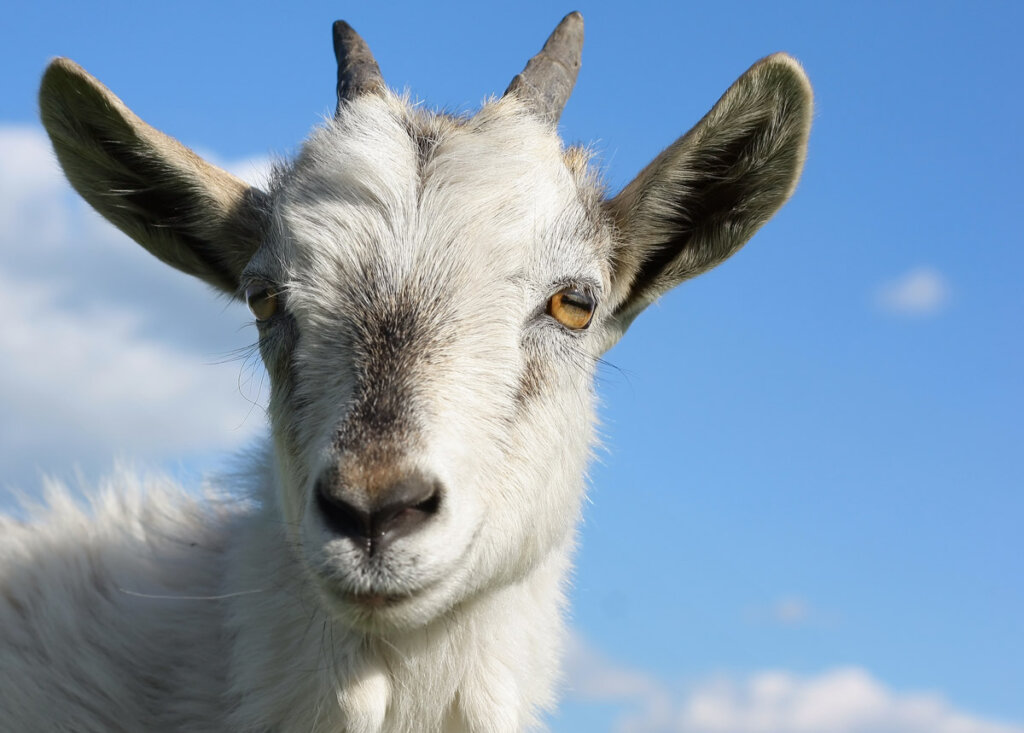
Table of Contents[Hide][Show]
My Journey With Goats
It’s true that I don’t currently have goats on the farm. However, when I tried keeping goats in the past, it was an utter failure. I wanted some goats to help clear brush away from the pastures that were creeping in, but I had more issues with the goats head-butting me and escaping than progress with the brush.
After my interview with Marc, I may be convinced to give them another try!
This post has been updated with my recent interview with Marc Warnke (#433) and still includes my interview with Rachael Tuller from Lost Peacock Creamery (episode #319). Both of them are a wealth of information when it comes to all things goats.
If you’re thinking about getting or already have goats of your own, this post will be extremely informative.
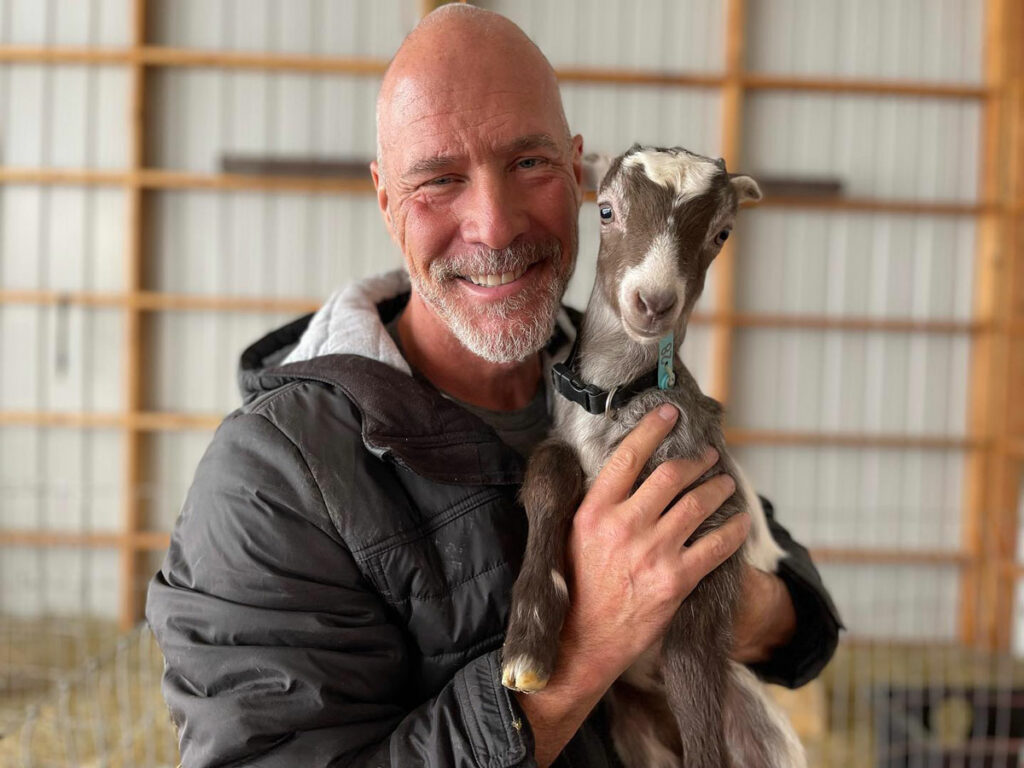
About Marc
Marc Warnke has been raising goats for milk, packing, pets and meat now for over a decade. He is known globally as “The Goat Guy” and his profession is homesteading, raising goats and teaching others to raise goats.
He lives in Boise, Idaho, on Ripple Ranch with his wife Tricia. They enjoy working the Ranch with the goats to create a global example of sustainable ranching.
Marc is the author of two books, the most recent of which, Modern Goat Packing, is now available for pre-order. The BBC has featured Marc in several documentaries and a current long-form documentary by Director Barlow Jackobs.
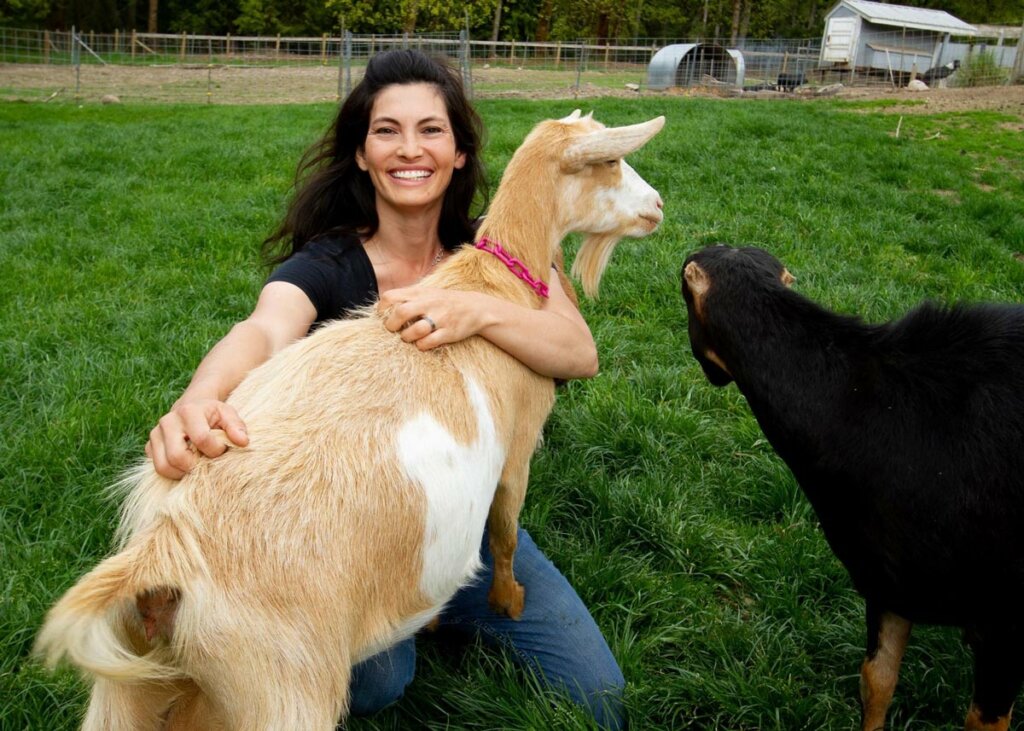
About Rachel
Lost Peacock Creamery is run by one strong-willed, outrageously over-the-top, everything-looks-better-in-pink woman; one very opinionated, get out of her way she’ll show you how it’s done 7-year-old, one tough as nails (you’ve got to be with an older sister like him), tiny little mister; and one incredibly kind, patient, resourceful and really really ridiculously good looking man.
As a Grade A Goat Dairy, Rachel and her husband are conscious of how their presence impacts the environment, and they’re proud to be a Thurston County Green Business. They milk 44 goats twice a day and make cheese three times a week.
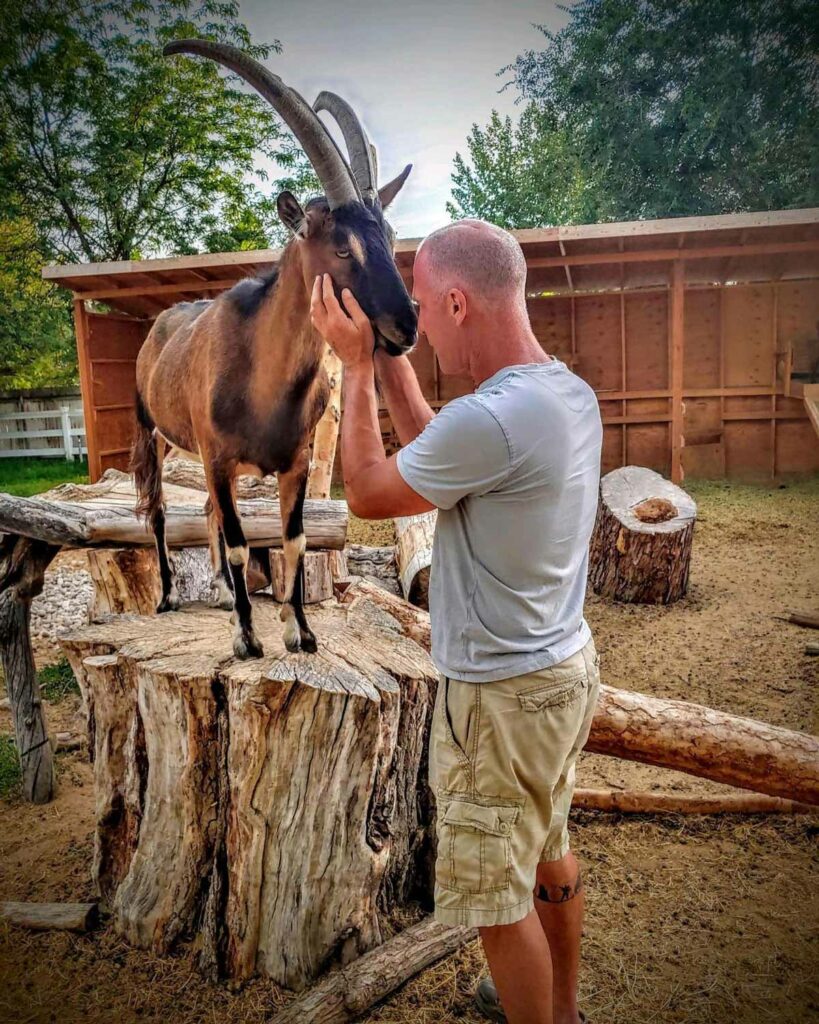
Raising Goats
One of the reasons most people choose to raise goats is for their milk. Some people have allergies to the casein in cow’s milk and find that they can drink goat’s milk with no issues or reactions.
Unfortunately, goat’s get a bad rap and, as Marc refers to them, they can be the “red-headed step-child” of the livestock world.
In my case, I got goats years ago to help clear the brush in certain areas of our property but found that pigs were much more efficient and easier to keep in, and they gave me bacon!
If you love food, you will absolutely love goat’s milk for making cheeses, yogurt, and other incredible dairy products.
Are Goats Hard to Raise?
Whether or not goats are hard to raise is really based on the type of goats you get. There are some goats that are just naughty and hard to deal with, whereas there are other goats that are much like friendly dogs. They’ll cuddle and snuggle, yes they’ll get out whenever they can, but they can also be very loyal and kind.
Marc mentioned in his podcast that it’s all about the training. Goats are naturally aggressive toward each other. This is not only how they play but also how they find their pecking order in the herd. He says it’s imperative that you never manhandle them, or they’ll think it’s OK to reciprocate this behavior.
Fencing Requirements
No goat is without its flaws. If they get out, they will eat through your yard and garden, so being prepared with adequate fencing is key before bringing the goats home.
Just be prepared, even with the tightest fencing, goats somehow, someway tend to find their way out. There’s a saying that if water can get through the gate, so will a goat!
Marc recommends field fencing or electric fencing (or a combination of both). He prefers horse paneling, which is a 2×4 square, because the baby goats can’t stick their heads through and get stuck by their horns.
You also want to try to keep the goats off the fence. Goats will climb on anything, trying to get to forage on the other side. He also mentioned that goats will want to rub on a fenceline when losing their fur. Marc recommends a strand of electricity at about mid-level and one at the top of the fence so they can’t stand on top.
Marc says goats respect electricity like no other animal. Once they know a wire is hot, they’ll leave it alone.
Beyond fencing, you may want to consider a herding dog to help out. You can learn more about farm dog breeds in this blog post and podcast interview.
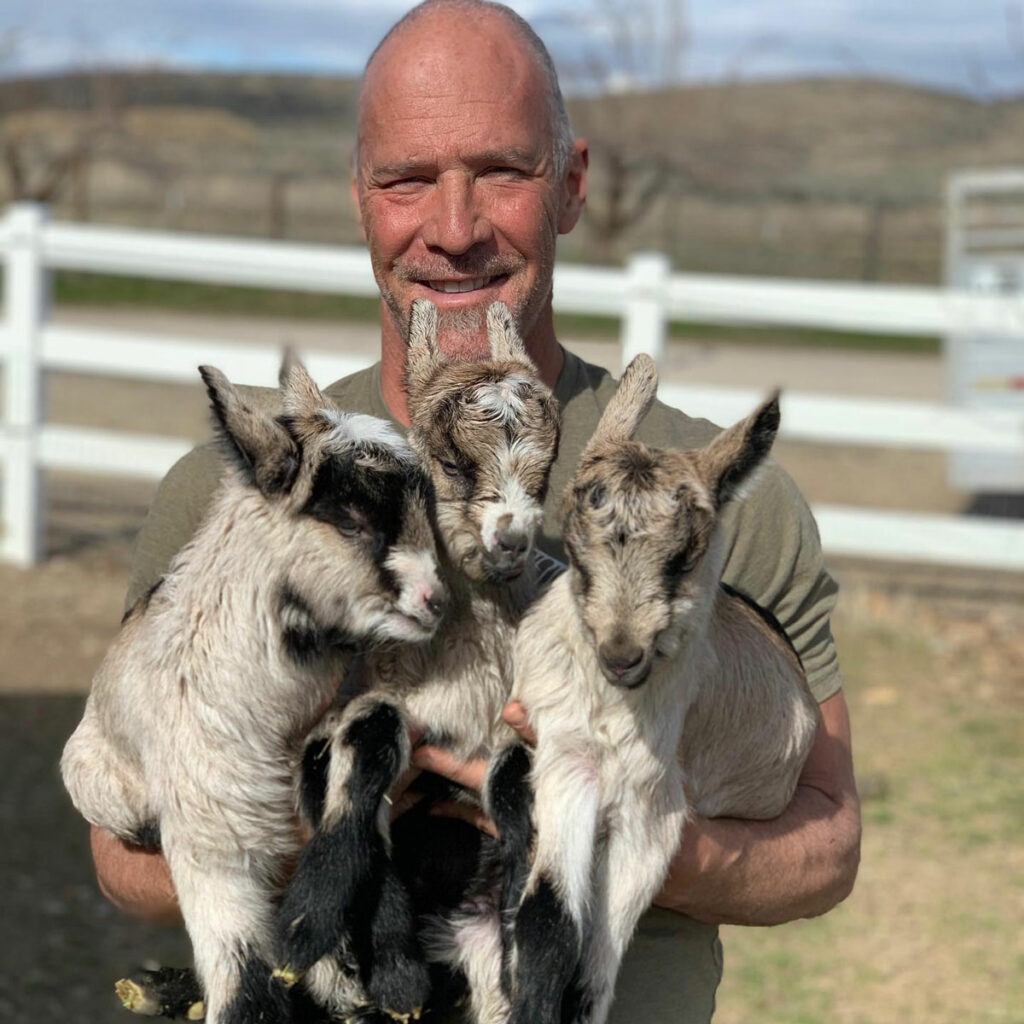
How Many Goats Should You Raise?
Goats are herd animals and will do best in pairs. However, goats will also bond with a chicken, a horse or a cow if they don’t have another goat friend (however, they do prefer a goat buddy).
If you introduce a new goat into a herd, it’s ideal to bring in two goats at a time. If you bring in just one, the rest of the goats will ignore the new goat, and it will never fit into the herd.
However, if you have to bring in only one goat at a time, Marc recommends taking an existing goat from the herd and isolating it with the new goat in a pen until they bond. Then, you can reintroduce the pair to the rest of the herd.

Buying Goats
Before purchasing a goat, it’s important to know what you’re planning to do with it. Most people raise goats for dairy, meat, or fiber (mohair or goat hair).
Once you know their purpose, this will narrow down the different breeds to choose from. After that, Rachel’s advice is to choose a breed you like the look of! Goats will cause mayhem at some point in time, so if they’re cute, it helps you to be more forgiving of them!
If you’re going to be milking your goats, be sure the udders are shaped right for your hands, especially if you have hand issues such as arthritis.
Nigerian goat’s milk is delicious and makes fantastic products, but they can be harder to milk.
Knowing the familial history of the goat you’re looking to buy can be helpful. If you’re able, take a look at the mom’s utters; this may help you to know if the baby’s udders will be good for you or not.
Goat Breeds
When getting a goat for its milk, the breed is very important. Here are some great dairy breeds, according to both Rachael and Marc:
- Nubians
- Guernsey
- Alpine
- Lamoncha
- Nigerians
- Sable Saanen
- Oberhasli
All these breeds should produce at least one gallon of milk per day. They have good temperaments and, with the right practices, will provide delicious milk.
As a tip, according to Rachel, Nigerians and Nubians are known for their high butterfat milk, and Alpines have more “salty” milk.

Milking Goats
Machine vs. Hand Milking
Rachael’s advice when it comes to milking is to do your homework. Because they have so many goats on their farm, they use a milking machine. However, if you’re working with just a few goats, it may be faster to milk by hand.
Marc said it takes him about five minutes to empty an udder, so if you’re milking two goats, you’re probably looking at about 20 minutes of total hands-on time.
Though a milking machine may speed up the process, you have to consider the time it will take to clean and sterilize it (Rachael shares that it takes about an hour and a half) versus simply washing your hands. Rachael shares that they don’t fire up the milking machine until they’re milking 11 goats or more.
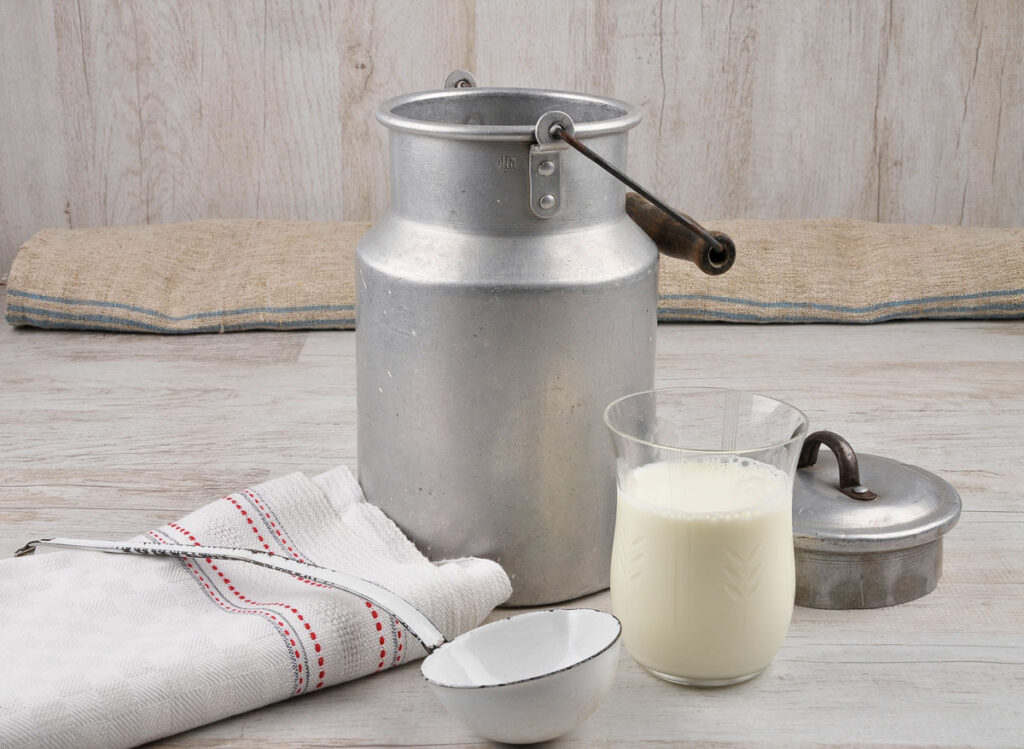
Supplies Needed for Milking a Goat
Marc milks by hand and highly recommends a milking stanchion to bring the goats up to your height. He has goat stanchion plans that teach you how to build one very simply for $15.
However, Marc also milked goats on a stool in his garden for years, in which case he says the only supplies you need are a stainless steel bucket (without seams) and a filter.
Goat Milk Taste
Many people who have tried goat’s milk and not liked it say it’s because it tastes “goaty.” This is a common complaint, and one Marc says can be completely controlled. He says you can make goat’s milk taste nearly identical to cow’s milk. So much so that someone wouldn’t be able to discern the two.
How to Get Great Tasting Goat’s Milk
Two important steps for great-tasting goat’s milk are:
- Pre-Care – Keeping a healthy goat with good bedding and maintaining proper care is a large part of getting good quality, delicious goat’s milk.
- Post-Care – Next, how you care for the goat before and after milking is just as important when it comes to the milk’s flavor. Sanitizing the udder prior to milking eliminates coliforms (which are bacteria that multiply and cause the milk to taste bad) is key. Also, getting the milk down to a cold temperature as quickly as possible makes a big difference in flavor. Marc uses a brined ice bath to get his milk down to 38 degrees within 20 minutes of milking.
Naturally Homogenized Milk
Goat’s milk is naturally homogenized, meaning the cream won’t separate from the milk. But that doesn’t mean you can’t use a cream separator to mechanically separate out the cream.
Marc also mentions that he freezes all his goat milk. Because it’s naturally homogenized, it defrosts wonderfully, unlike cow’s milk, which can get grainy.

Hardest Part of Raising Goats
Rachael says 100% the hardest part of raising goats for milk is kidding season. They do all their own kidding on their farm, and it’s a very taxing time with many sleepless nights making sure all the animals are safe and sound.
Last year they made a change to how they raise their animals because they want to be sure they’re following ethical practices. So, if babies want to stay with mom and nurse, then they let them as long as mom and baby are both doing well.
If the babies are struggling or the mom isn’t doing well feeding them, they turn the goats into bottle babies.
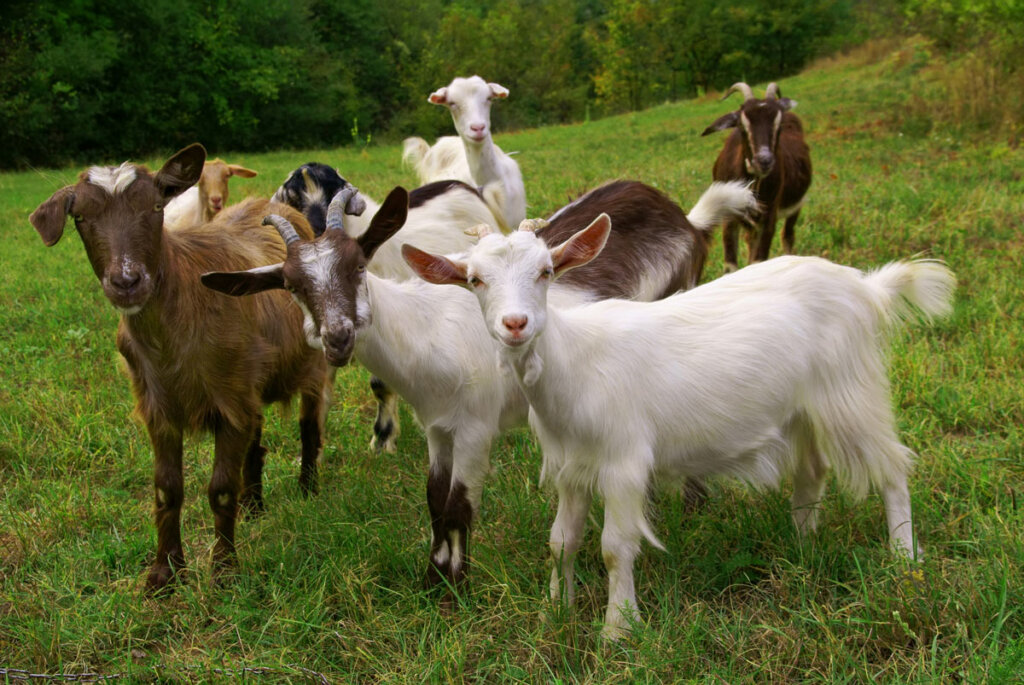
How Much Space is Required?
Because goats like to browse for their food and not graze (more on this below in the common diseases and health concerns for goats), it’s more important that the land you have is able to supply their needs with the forage they like to eat.
That being said, having about 1/10th of an acre per goat is ideal. Marc says raising a goat on a “dry lot,” meaning it doesn’t have access to a pasture, can be easier than pasture-raising it. Since goats require pasture rotation every 21 days to avoid getting parasites, raising them on a dry lot can be more successful.
If you listened to my podcast with Joel Salatin on maximizing your homestead, we discussed partitioning off your land to practice regenerative agriculture as well, so I highly recommend reading that blog post.
Finding a Goat Vet
Unfortunately, Rachael mentions that many vets today aren’t trained to treat goats. Marc mentions that in veterinarian school, the doctors only study goats for six days! Therefore, goat owners really need to become their own at-home vets.
Facebook has many groups you can join, and it can be a great resource and community to help you out when learning how to treat sick goats. However, it may not be very helpful in the case of an emergency because you might get 10 different answers as to why your goat isn’t doing well.

Common Diseases and Health Issues with Goats
Parasites
Rachael shares that the biggest thing to look out for with goats is parasite control. Many people say, “I want goats to mow my lawn”, but actually, you don’t want goats, you want sheep.
Goats tend to graze higher up, so they’ll reach over the top of fences to eat the bushes, or they’ll graze the tops of high grasses, etc. But when goats are forced to graze closer to the ground, they are susceptible to the parasites that live on the ground.
When a goat gets a heavy parasite load, it can be fatal to them. There’s a FAMACHA chart that helps you monitor the color of your goat’s eyelids to see the amount of blood circulating in their body.
If their eyelids are bright pink, they’re doing good with no threat of parasites, but if their eyelids are light pink or even white, that means there’s something that’s competing with their blood flow and they’re in danger.
Worming only when you need to is healthy for goats and helps keep them alive longer. (Livestock can expose you to parasites, so it’s important to learn how to get rid of parasites in your body, too.)
Hoof Rot
Goats were intended to have their hooves trimmed and it’s very important to keep up on trimmings or else they can get hoof rot (also called foot rot), which is very smelly and gross, but also not good for the goats and can eventually lead to lameness.
The best treatment is preventative, but if your goat does get hoof rot, they may need antibiotics to get it cleared up.
Hoof rot is also caused when goats have prolonged exposure to damp, moist ground, so making sure your goats have proper enclosures is key.
Poisons
Rhododendrons and azaleas are poisonous to goats. It’s important to keep an eye on your goats and know what they have access to in order to keep them safe.
Goats don’t know what plants will hurt them, so if you’re thinking about getting goats, know what plants are dangerous to them and consider getting rid of them from their property.
Polio
Goats are also highly susceptible to getting polio, but a simple influx of B vitamins can treat them.
Knowing the common diseases and health issues for goats can go a long way in preventing illness and even death for your herd.

Resources
If you want to learn more about raising goats, definitely check out Marc’s resources on both his website, PackGoats.com and his YouTube channel, where he has over 400 teaching videos.
Rachael recommends a few resources to help you on your journey to keeping a goat herd.
- Rachael’s “Crash Course for Marketing” is an online class for small farm owners or those looking to sell at Farmer’s Markets, etc. If you use code “MKN” you’ll get $20 off the purchase of your course!
- Holistic Goat Care by Gianaclis Caldwell – Holistic Goat Care: A Comprehensive Guide to Raising Healthy Animals, Preventing Common Ailments, and Troubleshooting Problems – this book helped Rachael drastically on her journey to raising goats.
- YouTube – there is a great wealth of information on raising goats on YouTube. Do a quick search and you’ll find all you need.
- Facebook – if you’re wanting to raise goats, join a Facebook group for goat owners now and start learning from those already doing it.
- Learn by doing! – Rachael says they have learned the most by trial and error. This can be costly, but it’s also completely different when you’re doing than when you’re reading or researching.
- Connect with Marc at PackGoats.com, on Instagram, or on Facebook.
- Connect with Rachael at Lost Peacock Creamery, on Facebook, or on Instagram.
[fusebox_transcript]
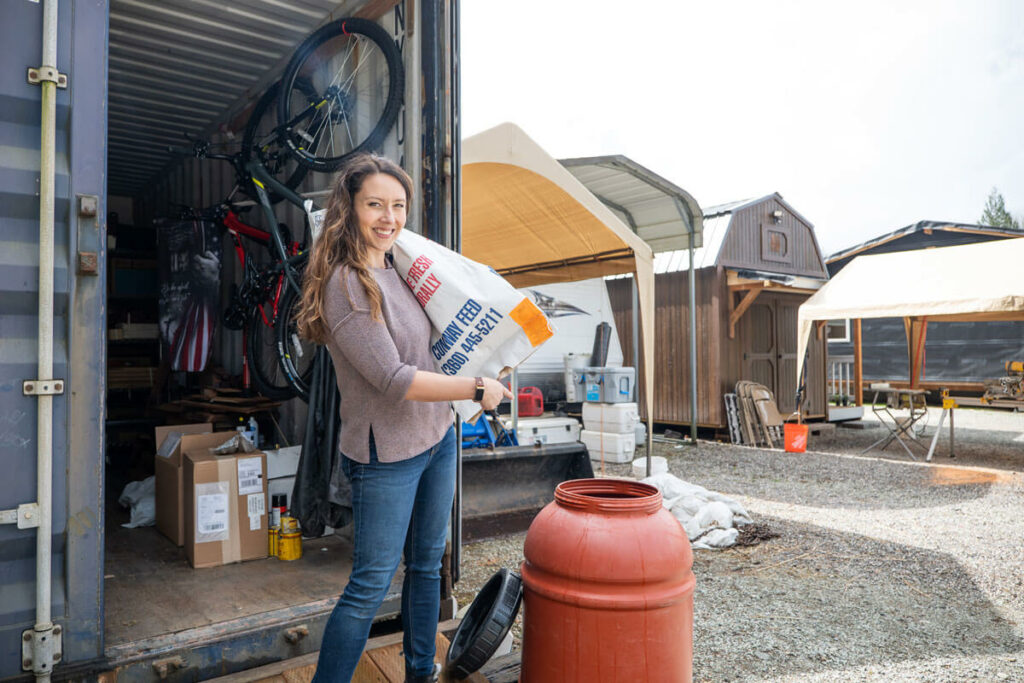
Related Articles You May Enjoy
- Planning Your Livestock for a Year’s Worth of Meat (Per Person)
- Stocking Up on Animal Feed (+ How Much to Feed Animals)
- Raising Backyard Meat Chickens
- How to Raise Pigs for Meat
- Raising Rabbits for Meat
- Raising Sheep for Fiber
- Creating a Homestead Business that Makes Money
- Maximizing Your Homestead for Profit & Production (With Joel Salatin)
[fusebox_transcript]



